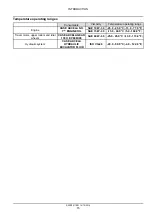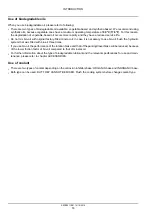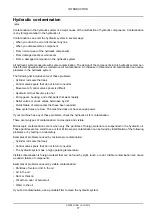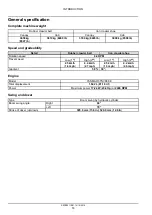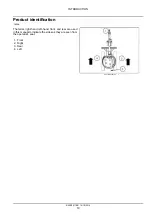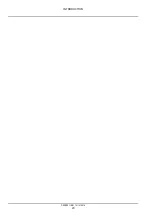
INTRODUCTION
Hydraulic contamination
CX36B
Contamination in the hydraulic system is a major cause of the malfunction of hydraulic components. Contamination
is any foreign material in the hydraulic oil.
Contamination can enter the hydraulic system in several ways:
• When you drain the oil or disconnect any line
• When you disassemble a component
• From normal wear of the hydraulic components
• From damaged seals or worn seals
• From a damaged component in the hydraulic system
All hydraulic systems operate with some contamination. The design of the components in this hydraulic system per-
mits efficient operation with a small amount of contamination. An increase in this amount of contamination can cause
problems in the hydraulic system.
The following list includes some of these problems:
• Cylinder rod seals that leak
• Control valve spools that do not return to neutral
• Movement of control valve spools is difficult
• Hydraulic oil that becomes too hot
• Pump gears, housing, and other parts that wear rapidly
• Relief valves or check valves held open by dirt
• Quick failure of components that have been repaired
• Slow cycle times are slow. The machine does not have enough power.
If your machine has any of these problems, check the hydraulic oil for contamination.
There are two types of contamination: microscopic and visible.
Microscopic contamination occurs when very fine particles of foreign material are suspended in the hydraulic oil.
These particles are too small to see or feel. Microscopic contamination can be found by identification of the following
problems or by testing in a laboratory.
Examples of problems caused by microscopic contamination:
• Cylinder rod seals that leak
• Control valve spools that do not return to neutral
• The hydraulic system has a high operating temperature
Visible contamination is foreign material that can be found by sight, touch, or odor. Visible contamination can cause
a sudden failure of components.
Examples of problems caused by visible contamination:
• Particles of metal or dirt in the oil
• Air in the oil
• Dark or thick oil
• Oil with an odor of burned oil
• Water in the oil
If you find contamination, use a portable filter to clean the hydraulic system.
S5PX0011E01 14/10/2014
17













